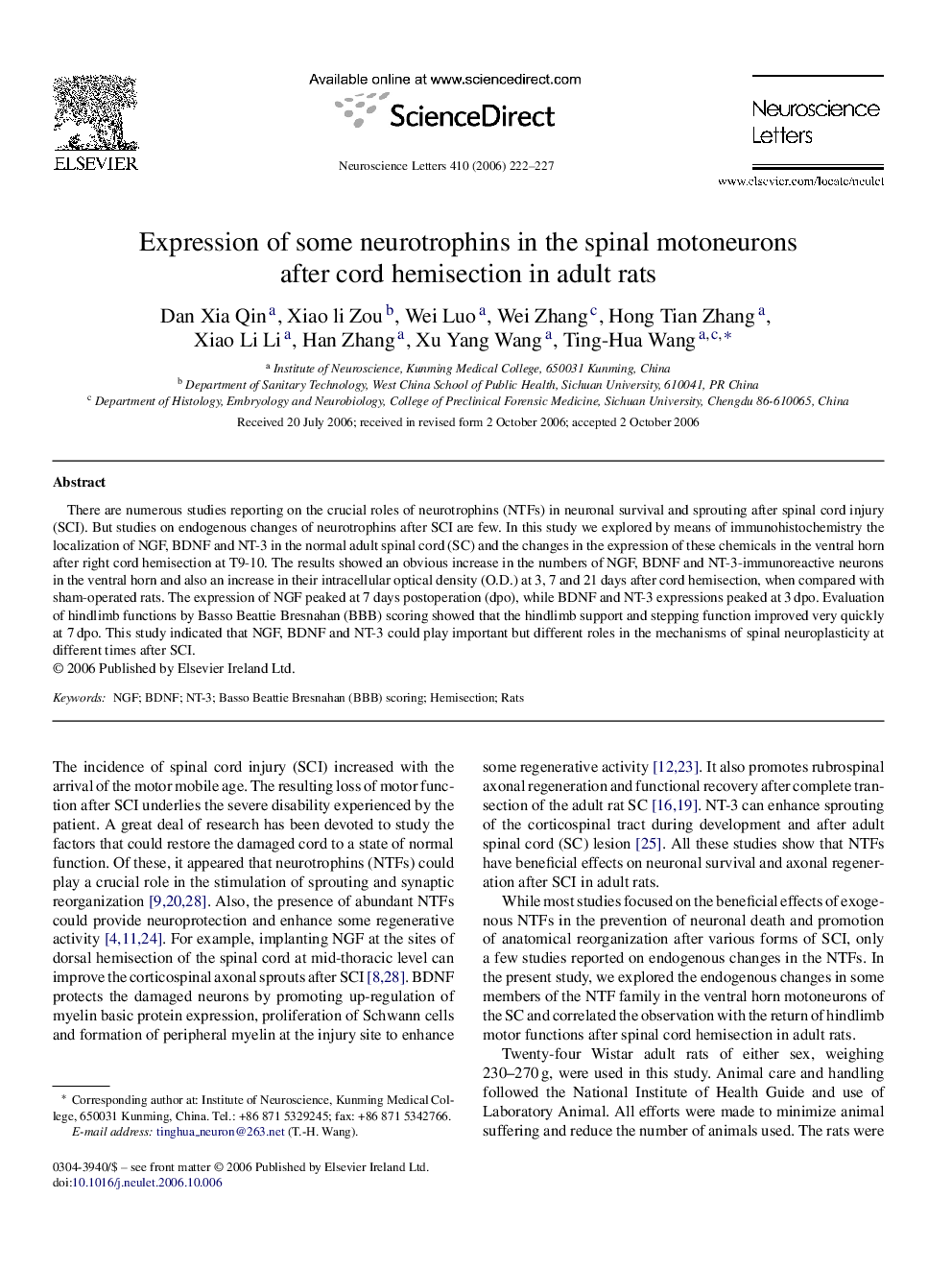| Article ID | Journal | Published Year | Pages | File Type |
|---|---|---|---|---|
| 4349782 | Neuroscience Letters | 2006 | 6 Pages |
Abstract
There are numerous studies reporting on the crucial roles of neurotrophins (NTFs) in neuronal survival and sprouting after spinal cord injury (SCI). But studies on endogenous changes of neurotrophins after SCI are few. In this study we explored by means of immunohistochemistry the localization of NGF, BDNF and NT-3 in the normal adult spinal cord (SC) and the changes in the expression of these chemicals in the ventral horn after right cord hemisection at T9-10. The results showed an obvious increase in the numbers of NGF, BDNF and NT-3-immunoreactive neurons in the ventral horn and also an increase in their intracellular optical density (O.D.) at 3, 7 and 21 days after cord hemisection, when compared with sham-operated rats. The expression of NGF peaked at 7 days postoperation (dpo), while BDNF and NT-3 expressions peaked at 3Â dpo. Evaluation of hindlimb functions by Basso Beattie Bresnahan (BBB) scoring showed that the hindlimb support and stepping function improved very quickly at 7Â dpo. This study indicated that NGF, BDNF and NT-3 could play important but different roles in the mechanisms of spinal neuroplasticity at different times after SCI.
Keywords
Related Topics
Life Sciences
Neuroscience
Neuroscience (General)
Authors
Dan Xia Qin, Xiao li Zou, Wei Luo, Wei Zhang, Hong Tian Zhang, Xiao Li Li, Han Zhang, Xu Yang Wang, Ting-Hua Wang,
